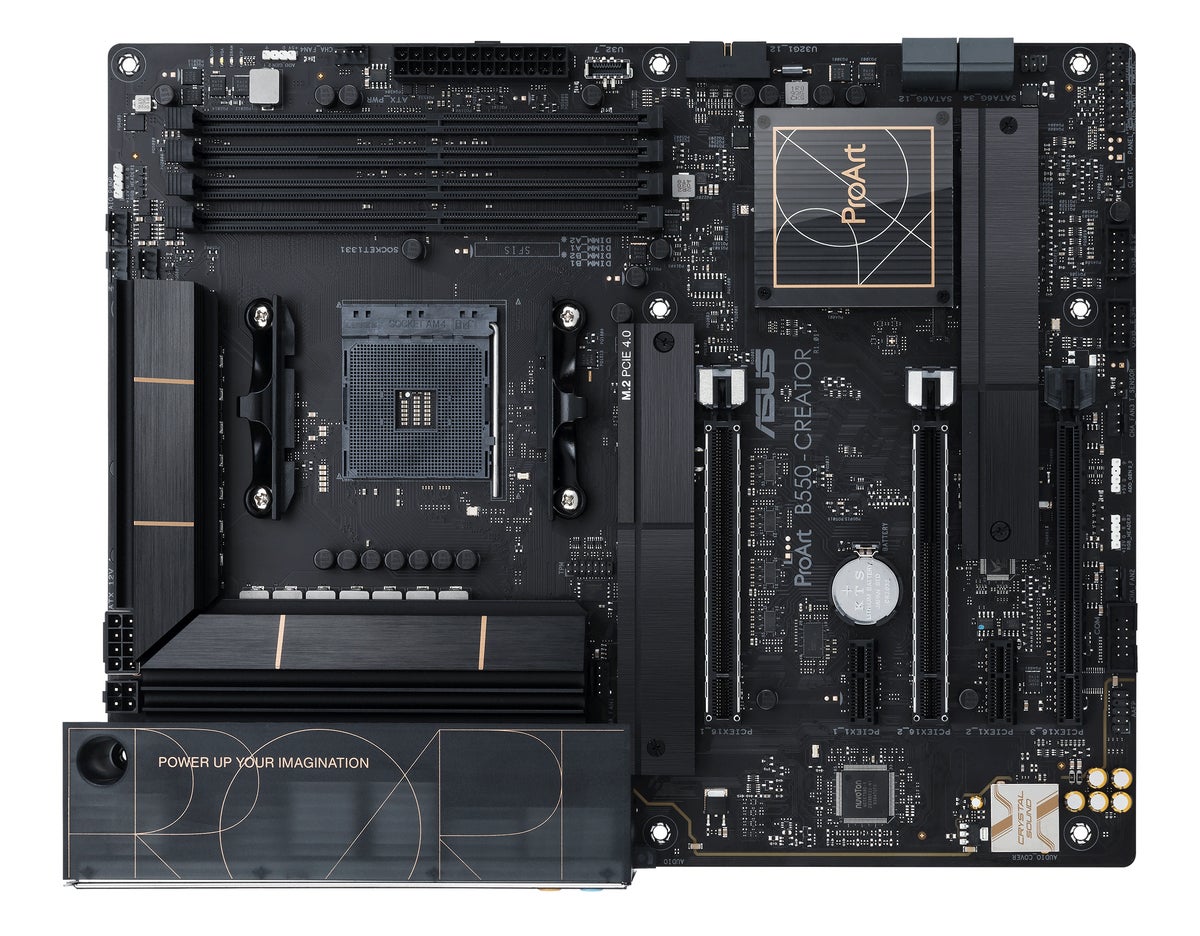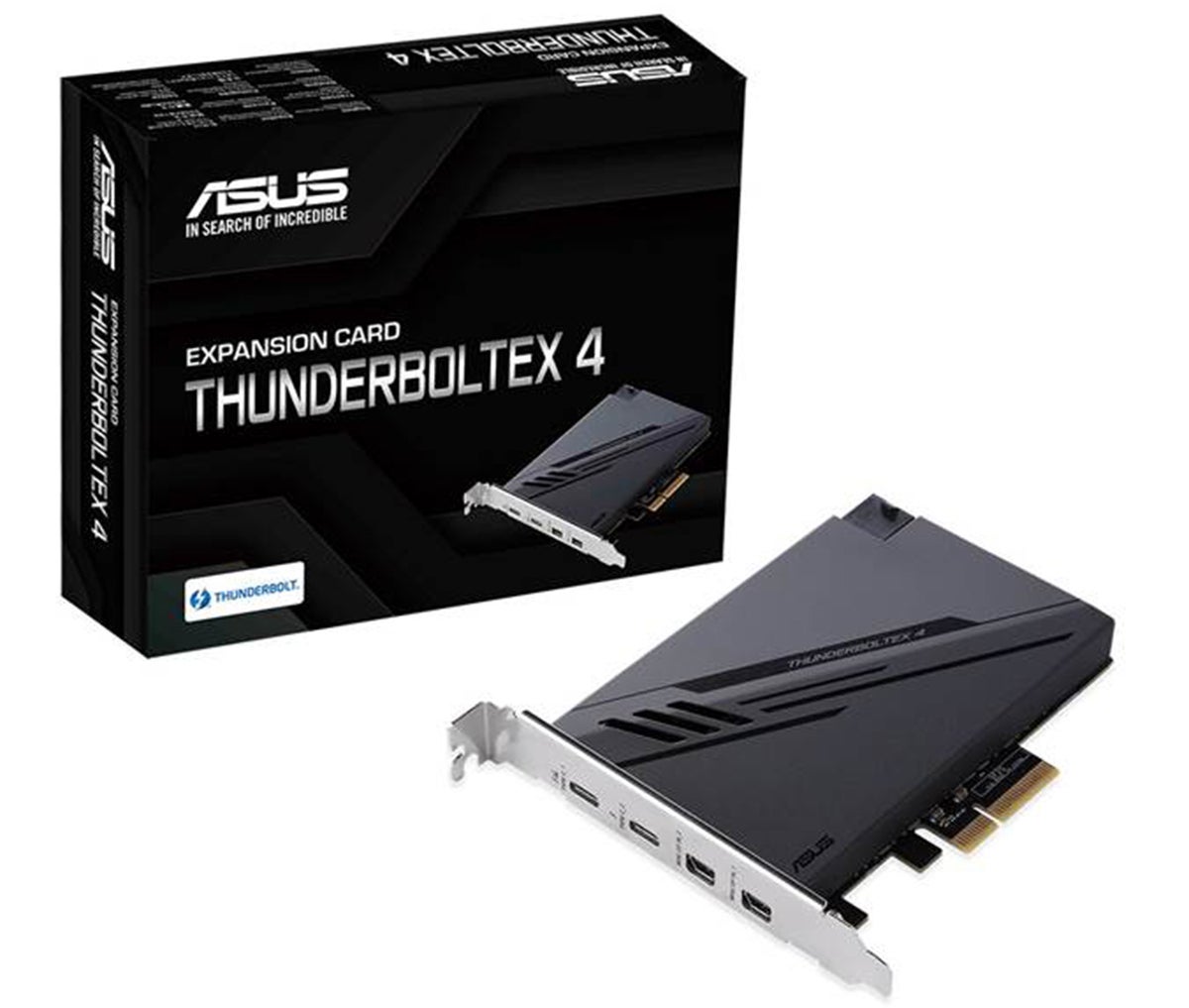Some screamed for Thunderbolt on AMD platforms, while others shrugged. We explain who needs it and who doesn’t.

Asus
Today’s Best Tech Deals
Picked by PCWorld’s Editors
Top Deals On Great Products
Picked by Techconnect’s Editors
The dearth of Thunderbolt ports on most AMD-based motherboards has been well documented and whined about for years. Asus just threw everyone a bone with its Thunderbolt 4-equipped ProART B550-Creator motherboard.
The AM4 motherboard supports Ryzen 5000 CPUs and is aimed at content creators. That’s why it supplies such a long list of I/O ports, including two 2.5-gigabit ethernet ports and a pair of Thunderbolt 4 ports.
The board will be the first Ryzen-based model to include the newer standard. Thunderbolt 4 adds support for two 4K monitors at 60Hz refresh rate (Thunderbolt 3 supported one), requires the PC to wake when connected to a Thunderbolt dock, adds protection for DMA-based attacks, and requires a minimum of 32Gbps of data transfer speeds. It also requires charging support.
 Asus
AsusAsus’ new ProART B550-Creator is the first AMD motherboard to feature Thunderbolt 4 ports. The DP-in port would allow you to route your GPU’s graphics through the Thunderbolt 4 ports.
Do you need Thunderbolt on a desktop?
If that charging support makes Thunderbolt sound more like a technology for laptops than desktops, you’re not far off the mark. Outside of Asrock’s support on some motherboards, most AMD desktop fans haven’t really missed it. Most desktops already support multiple 4K panels and have an excessive amount of PCIe and storage options.
So why bother to add Thunderbolt 4 to the new ProART B550-Creator? The company said this was just the beginning: “You will see the implementation of more Thunderbolt 4 in the future,” Asus said, while declining to offer further details. The company did note that on the Intel side, with the recent Z590 chipset, Thunderbolt 4 was implemented directly on motherboards and also offered as an upgrade on some boards.
As with any Thunderbolt product, the ProART B550-Creator supports one 8K display or two 4K displays at 60Hz. That’s why the board has a DisplayPort input for the graphics card in the rear.
Some may wonder why Asus chose to use the B550 chipset instead of a more advanced chipset, such as the X570, which has the newer PCIe 4 interface. Asus said the B550 was designed for Thunderbolt, while the X570 was not. It was far easier to go with the board that already had support built in, Asus said, adding that the B550 boards are more affordable too.
More need for Thunderbolt in the future
Asus sees more uses for desktop Thunderbolt in the future. “Storage is the most common use case, but we are seeing broader adoption of ‘desktop’ hubs with storage and expanded USB connectivity, as well as display linking,” the company explained. These use cases apply to the prosumers and professionals for which this motherboard is designed.
Asus is designing accessories that take advantage of Thunderbolt. The Asus ProART Creator Hub, for instance, allows for the monitor and motherboard to be managed in one single user interface, and provides access to features like more streamlined calibration for ProART series monitors.
User with video-intensive needs will find desktop Thunderbolt particularly handy, Asus said. “We see desktop videography requirements demanding higher-speed connections than standard USB 10Gbps or even 20Gbps,” the company explained. “This includes prosumers and professionals shooting in 10-bit video workflows and resolutions exceeding 4K (5K, 6K and 8K+ ).” These users need all the I/O speed they can get, Asus says: “They want high-speed offloading and even the possibility to easily ‘scrub’ the drive.”
For the broader population of mainstream users and enthusiasts, USB 3.X with 10Gbps is usually more than enough, especially as many have legacy drives of that USB generation. But if you like to have some “future-proofing” in your PC, Thunderbolt 4 (or USB4, for that matter) might be worth getting in your next computer.
 Asus
AsusOn many Asus boards that feature a “TB” or Thunderbolt header, the optional ThunderboltEX 4 can enable it.
Note: When you purchase something after clicking links in our articles, we may earn a small commission. Read our affiliate link policy for more details.
One of founding fathers of hardcore tech reporting, Gordon has been covering PCs and components since 1998.

